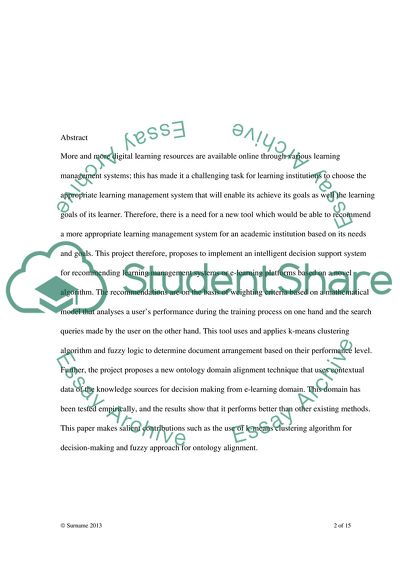Cite this document
(Decision-Making Model in E-Learning Coursework Example | Topics and Well Written Essays - 3000 words, n.d.)
Decision-Making Model in E-Learning Coursework Example | Topics and Well Written Essays - 3000 words. https://studentshare.org/information-technology/1814597-decision-support-systems-in-e-learning
Decision-Making Model in E-Learning Coursework Example | Topics and Well Written Essays - 3000 words. https://studentshare.org/information-technology/1814597-decision-support-systems-in-e-learning
(Decision-Making Model in E-Learning Coursework Example | Topics and Well Written Essays - 3000 Words)
Decision-Making Model in E-Learning Coursework Example | Topics and Well Written Essays - 3000 Words. https://studentshare.org/information-technology/1814597-decision-support-systems-in-e-learning.
Decision-Making Model in E-Learning Coursework Example | Topics and Well Written Essays - 3000 Words. https://studentshare.org/information-technology/1814597-decision-support-systems-in-e-learning.
“Decision-Making Model in E-Learning Coursework Example | Topics and Well Written Essays - 3000 Words”. https://studentshare.org/information-technology/1814597-decision-support-systems-in-e-learning.


